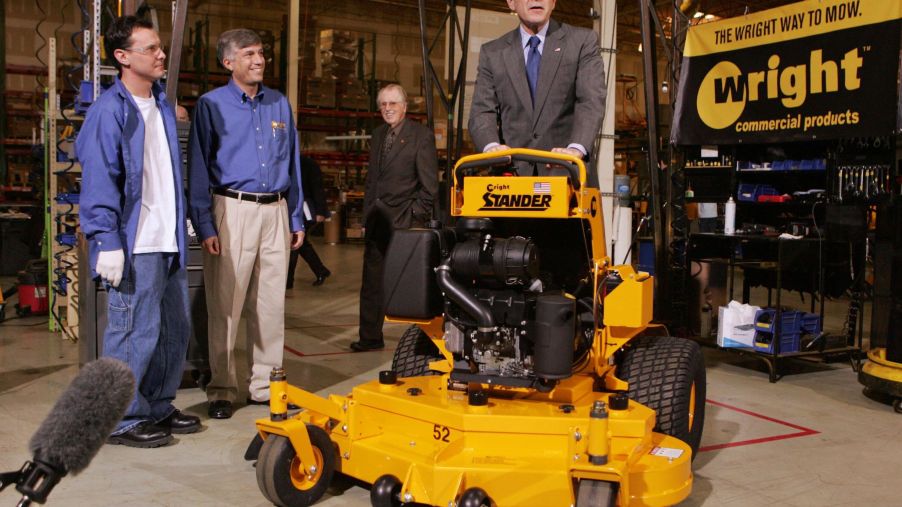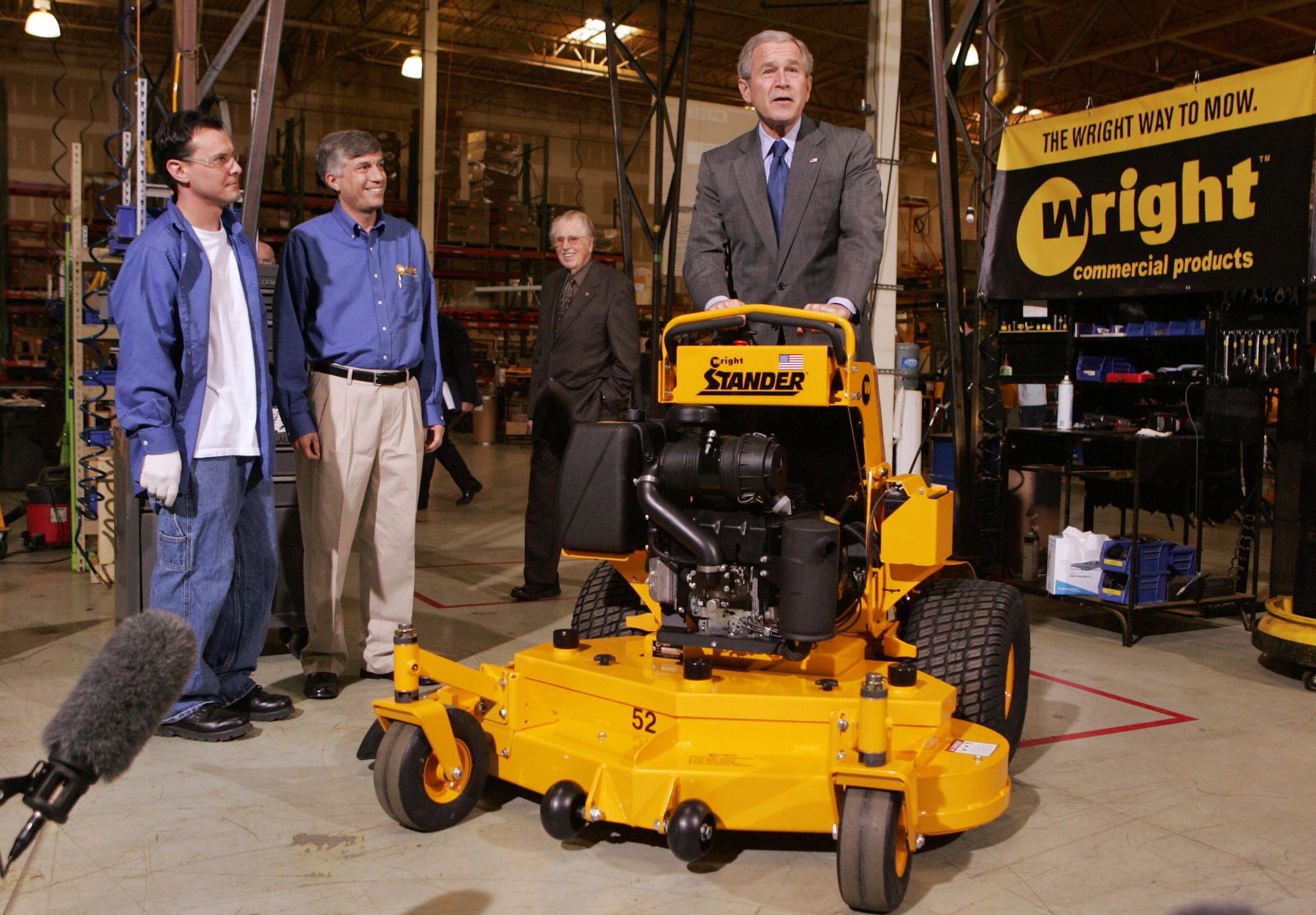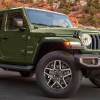
Everything You Need to Know About Stand-on Mowers
Professional lawn care companies often utilize stand-on lawn mowers to mow large lawns and commercial properties. Although they look cool, wouldn’t it be more comfortable to sit on a zero-turn? Would a stand-on model be a better choice for mowing a personal lawn?
What is a stand-on lawn mower?

A stand-on mower looks much like a modern zero-turn lawn mower, except there isn’t a place to sit down. Instead of a seat, a stand-on lawn mower model features a small platform to stand on with a padded area to protect your knees.
Stand-on mowers are more compact than typical zero-turn lawn mowers as the engine rides in front of the operator instead of the standard rear placement. This engine placement is possible since the operator’s legs are under them while standing instead of in front of them while sitting. Also, a stand-on option provides a more comfortable posture while mowing for many people suffering from lower back pain or those who wish to reduce their time sitting for other health reasons.
The best stand-on models, according to Family Handyman
If standing up while mowing sounds like your cup of tea, Family Handyman reviewed three “highly rated options.” While this list doesn’t include anywhere close to all available options, it is an excellent place to start if you’re considering purchasing a stand-on mower.
The first model under review is the John Deere QuickTrak Stand-On Mower. The QuickTrak is the least expensive stand-on mower on the list, carrying a price of $8,789, and also has the smallest, cutting a 36-inch wide swath. With a 5.5-gallon gas tank and 18.5-hp engine, the John Deere QuickTrak works best on small to medium-sized lawns, and its compact size makes it ideal for navigating tight spaces.
Better suited for medium to large lawns, the Husqvarna Stand-On Mower features a 48-inch deck and a 24.5-hp Kawasaki V-twin engine with a five-year warranty. Unfortunately, the large engine, exceptional warranty, and wider mowing swath demand the heftiest price tag of the group at $10,200.
Last on the list is the largest model of the three. Offering the biggest bang for the buck, the $9,499 Cub Cadet Stand-On Mower features a 54-inch mowing width powered by a 25.5-hp Kawasaki V-twin engine. In addition, the Cub Cadet’s large 24-inch rear tires provide exceptional ground clearance and make hopping over curbs a breeze, while the 10-gauge steel deck promises years of service.
Is a stand-on mower better than a zero-turn?
Both mower types are technically capable of zero-radius turns and share similar construction and specifications compared to models from the same manufacturer. The differences lie in the functionality of each type. For example, a sit-down zero-turn may work best if you are unsteady on your feet, but if you suffer from lower back pain or wish to stand up more throughout your day, a stand-on mower could help.
One significant advantage offered by stand-on mowers is the increased visibility from a standing position and the ease of mounting and dismounting the machine. Of course, price is the most significant disadvantage of stand-on mowers, but the price difference will likely decrease as they become more popular.
Should you buy a stand-on lawn mower?
If you think a stand-on mower will enhance your lawn care experience, there isn’t a reason not to buy one. This class of mowers is reliable, capable, and efficient as any other riding lawn mower on the market. However, if you’re still on the fence about them, consider renting a couple of different models to mow your lawn before doling out your hard-earned cash.



